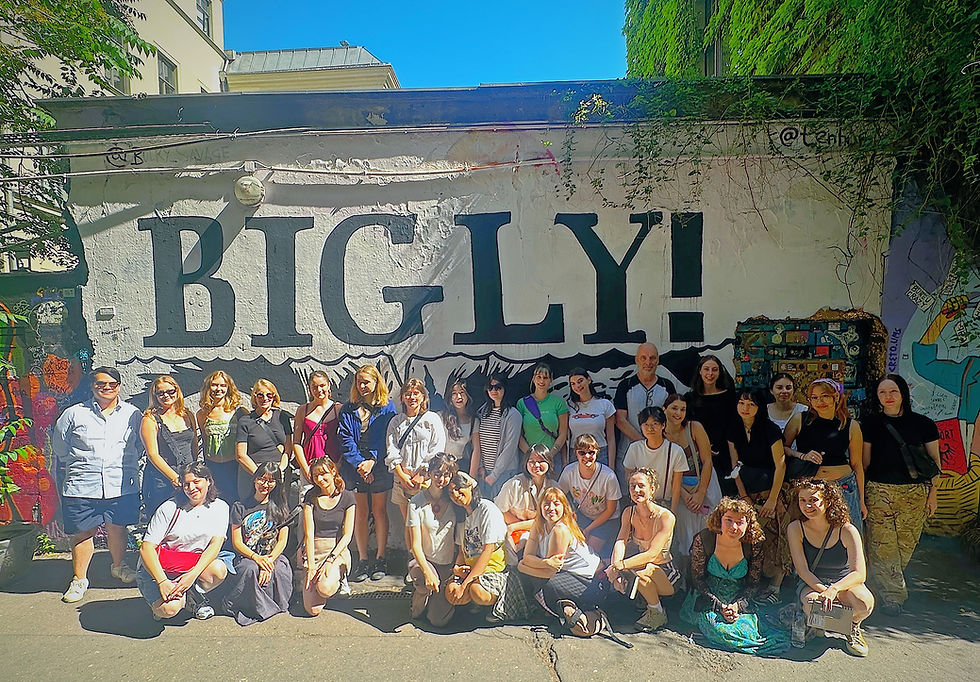Against the Therapeutic Museum
- MUSEUM STUDIES

- Mar 18, 2022
- 4 min read
Updated: Mar 19, 2022
Disability and the Ideology of Cure
Lauren Poole, MA (Museum and Heritage Studies) student

At first glance – or, at least, in the ways it’s commonly disseminated – the topic of disability in museum studies centres on three areas: accessibility, diversity, and inclusion; activism and social change; and the therapeutic museum. And while much has been written about how and why the former two are long overdue, the latter’s relationship to disability has been oddly under-theorised. If museums are to have therapeutic, even medicinal, effects, why do we assume they have relevance to disabled people?
The therapeutic museum draws on the responsibility of institutions to “do something”: to act as social agents, to purposefully serve their communities, to be a public good. The medical credentials of this idea are bolstered by strong foundations in art therapy, and more broadly by scholarship on the positive relationship between cultural engagement and health. This article doesn’t argue that the therapeutic museum fails to fulfil its intentions, or even that those intentions are inherently flawed or unnecessary. Rather, we need to ask ourselves why these intentions fall with unerring accuracy on disabled audiences.
Part of this is inevitably due to a medicalised view of disability. While accessibility measures increasingly adopt the social model of disability, the therapeutic museum often reverts to the medical model. Under this model,
... disability [is] a problem or deficit located within individuals. Because disability is an individual problem, disabled people must fix themselves – through rehabilitation, medication, prostheses, assistive devices, and so on – so that they can conform with or more closely match the bodies, minds, and behaviour of non-disabled people. [1]
Thus, when the therapeutic museum acts to improve particular health outcomes in or for disabled people it may risk – intentionally or otherwise – using the ‘good’ (power, resources, and position) of the institution to affect this ‘fixing’.

What’s worse – and as the second half of the above definition outlines – the medical model demands disabled peoples’ effort, time, and energy to carry out this work of supposed betterment. Resistance or questioning of therapeutic processes becomes unreasonable: “Why don’t you want to get better?”, the therapeutic museum asks, “Why are you rejecting our help?” These questions raise yet more uncomfortable ones:
Why should disabled people need, want, or try to become non-disabled?
Why is it the museum’s place to ask them to?
Why is the pursuit of non-disability a requirement of museum visitation, engagement, and/or access?

As a disabled museum studies student, it’s an ongoing source of irony to me that so often the
only accessible option at cultural institutions is therapeutic programming. This was blown into sharp contrast at two recent academic conferences. At the first, the MAARC Annual Meeting, I presented alongside other disabled scholars on the presence and value of disability history, disability archaeology, and disabled modes of engaging and being. At the second, the Museum Next ‘Museums, Health, and Wellbeing’ conference, there was little mention of disability, despite a heavy focus on improving ‘health’ and the need to change or prevent “unhealthy bodies and unhealthy minds”. It was surreal to move from a celebration of disability to a forum where case studies of disability and disabled people were not acknowledged as such, even as the attempted changing of their disability was the stated task at hand. It does us no favours, as museum studies scholars, to pretend disability and health are unrelated, or to pretend that ‘health’ is not sometimes a by-word for ‘cure’.
Eli Clare – in the heart-wrenchingly beautiful book Brilliant Imperfection – discusses the many guises that the ideology of cure can take. Clare writes:
[E]limination of some kind – of a disease, of a future existence, of present-day embodiments, of life itself – is essential to the work of cure. Sometimes these eradications result in benefit, but they can also cause individual death and the diminishment of whole groups of people. The violence that shadows these erasures could be framed as a mere side effect, or an unavoidable cost, of saving lives and normalising body-minds. But let me suggest a different framing: That this violence is something more inherent – a consequence, an impact, even an intent. I don’t mean that each individual instance of cure is violent. Remember, the restoration of health arrives in many slippery guises. Rather, I mean that as a widespread ideology centred on eradication, cure always operates in relationship to violence. [2]
Clare acknowledges the disjuncture between anti-cure politics and experiences of, for instance, chronic pain. We can have “looping realities” where cure is both an ideology of violence against disabled people, and something which some disabled people may wish for and work towards. [3] But it is crucial to recognise that cure is an ideology, and one to which the therapeutic museum can, and often does, contribute. This is not to diminish its positive effects – for instance, the mental health benefits that institutions provided to people suddenly plunged into COVID lockdown – but to highlight how this ideology, and the predominance of therapeutic models as the only or primary mode of accessible engagement and visitation, play out in institutional intentions towards and interactions with disabled audiences.
Museum can’t cure disabled people – and they shouldn’t want to.
Alexandra Morris, “A Brief Guide to Disability Terminology and Theory in Ancient World Studies,” Society for Classical Studies, 30 August 2021.
Eli Clare, Brilliant Imperfection: Grappling with Cure (Durham: Duke University Press, 2017), 28.
Ibid, 61.

Lauren Poole is a disabled post-graduate student in Museum and Heritage Studies at the University of Sydney. She received the 2017 Max Le Petit Memorial Prize for Classical Archaeology, and her upcoming dissertation explores the loss of heritage sites to sea-level-rise. Her writing most recently appears in Growing Up Disabled in Australia (Black Inc. Books, 2021) and Earth Cries (Sydney University Press, 2021).







Comments